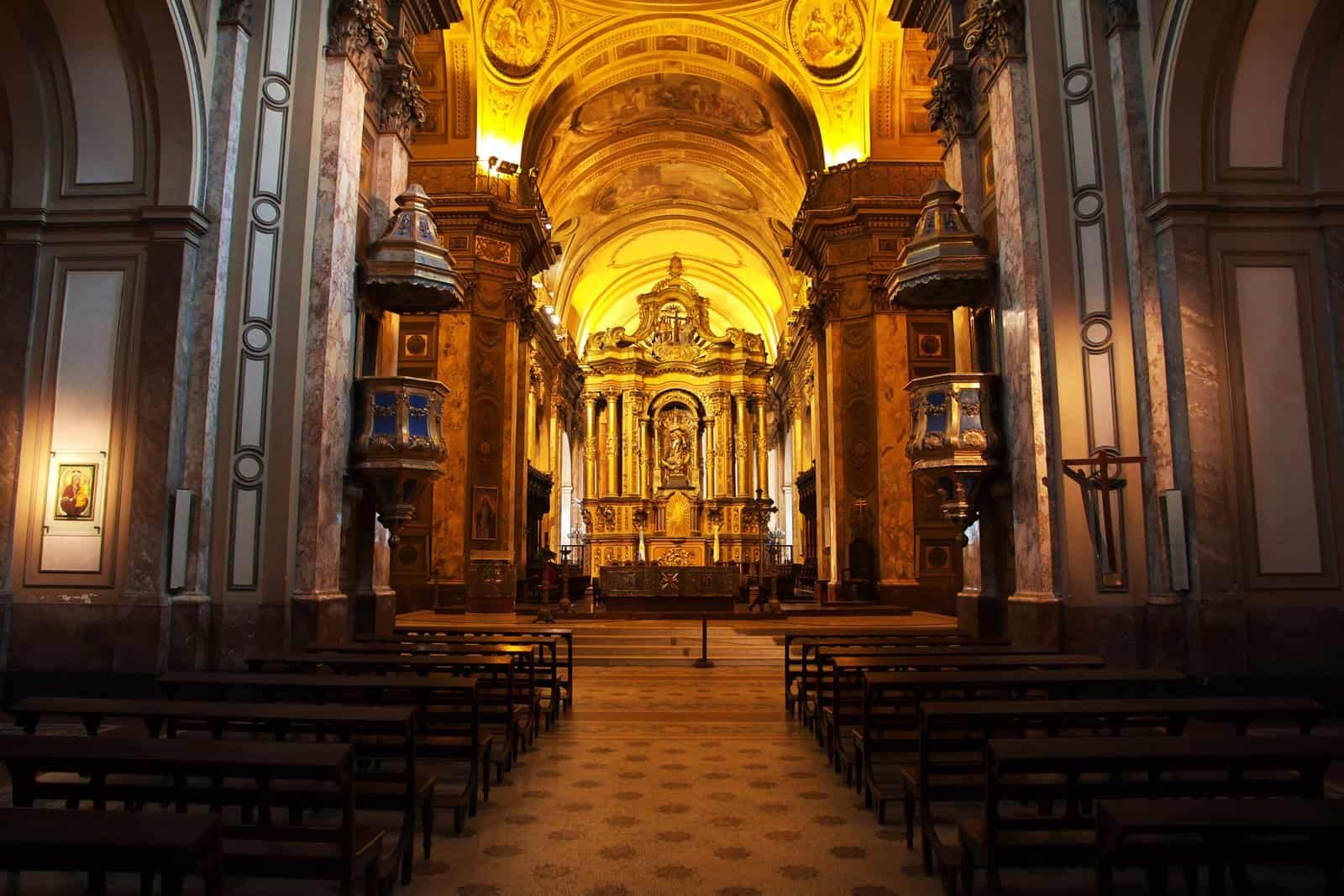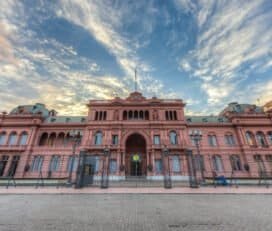Buenos Aires Metropolitan Cathedral – Buenos Aires, Argentina
Overview
The Buenos Aires Metropolitan Cathedral (Catedral Metropolitana de Buenos Aires) stands as the spiritual and historical heart of Argentina’s capital. Overlooking the Plaza de Mayo, this grand neoclassical building serves as the main Catholic church of the city and the seat of the Archbishop of Buenos Aires—a role once held by Pope Francis before his election to the papacy in 2013. Blending classical European architecture with deep national symbolism, the cathedral is as much a monument to Argentina’s history as it is a place of worship. Inside, visitors find intricate marble floors, ornate altars, and the marble mausoleum of national hero General José de San Martín. For travelers seeking both cultural depth and quiet reflection, the cathedral is one of Buenos Aires’s most essential landmarks.
Why Visit
- Visit the former parish of Pope Francis, where he often celebrated mass before becoming pontiff
- Admire the cathedral’s striking neoclassical façade and beautifully detailed interior
- Pay respects at the tomb of Argentina’s liberator, General José de San Martín
- Experience the intersection of faith, art, and national identity in the heart of Buenos Aires
- Enjoy a moment of calm just steps from the political bustle of Plaza de Mayo
Highlights
- Neoclassical Façade: A colonnade of 12 Corinthian columns symbolizing the apostles, resembling a Greek temple more than a traditional cathedral
- Interior Design: Lavish marble floors, gilt wood altars, and 18th-century sculptures reflecting Baroque and Renaissance influences
- Mausoleum of San Martín: A black marble tomb guarded by three statues representing Argentina, Chile, and Peru—the nations he helped liberate
- Chapel of the Holy Trinity: A richly decorated side chapel used for daily mass and prayer
- Pope Francis Legacy: Personal memorabilia and photographs honoring Jorge Mario Bergoglio’s service as Archbishop of Buenos Aires
History & Cultural Significance
The Buenos Aires Metropolitan Cathedral has a long and layered history dating back to the 16th century. The original church, built in 1593, was a modest adobe structure that underwent several reconstructions after fires and collapses. The current neoclassical design was begun in 1752 and completed in 1827, giving it its distinctive Greco-Roman exterior—an architectural rarity for a Catholic cathedral. The design reflects both the European aspirations and the emerging identity of a young Argentina. Inside, the cathedral became the stage for major moments in national history, from independence celebrations to memorials for fallen soldiers. The mausoleum of General José de San Martín was installed in 1880, further solidifying the cathedral’s role as a patriotic shrine. In the modern era, the cathedral gained renewed attention when Archbishop Jorge Bergoglio became Pope Francis, transforming this already iconic church into a global pilgrimage site.
Typical Costs & Tickets
Entry to the Metropolitan Cathedral is free. Visitors can explore the main nave, chapels, and San Martín’s tomb at no charge, though donations are welcome. Guided tours are available in English and Spanish, usually lasting 30–45 minutes and costing a small voluntary contribution. These tours often include details about the architecture, national symbolism, and Pope Francis’s pastoral work in Buenos Aires. The cathedral is open Monday through Friday from approximately 7:45 AM to 6:30 PM, and on weekends until the evening masses conclude. Photography is permitted but should be done respectfully, especially during services.
Best Time to Visit
The cathedral is open year-round, but mornings are the best time for a quiet visit before crowds from Plaza de Mayo arrive. Late afternoon offers warm sunlight that filters through the stained glass, highlighting the interior’s detail. Visitors interested in attending mass can join one of the daily services, often accompanied by live organ music. For those exploring Buenos Aires on foot, the cathedral is conveniently located near the Casa Rosada, Cabildo Museum, and Avenida de Mayo, making it an ideal first or last stop on a walking tour of the historic center.
Nearby Experiences
The Buenos Aires Metropolitan Cathedral sits on the northern edge of Plaza de Mayo, the city’s most important civic square. Across from it stands the pink presidential palace, the Casa Rosada, and the Cabildo Museum, housed in the old colonial town hall. Just a few blocks away, visitors can stroll down Florida Street for shopping or visit Café Tortoni, one of the oldest and most famous cafés in Buenos Aires. The nearby Kirchner Cultural Centre (CCK) offers art exhibitions and live performances in a beautifully restored former post office. Together, these landmarks make the cathedral part of a larger network of cultural and historical sites that define Argentina’s capital.
Travel Tips
- Dress modestly—shoulders and knees should be covered inside the cathedral
- Visit early in the morning or during weekday afternoons to avoid crowds
- Look for the small museum and shop near the back of the cathedral featuring religious art and books
- Attend mass for an authentic local experience, especially on Sundays
- Combine your visit with the Casa Rosada and Plaza de Mayo for a complete historical walk
Fun Facts & Local Legends
- The cathedral’s design was influenced by Paris’s Madeleine Church, giving it a rare classical façade among Latin American cathedrals
- Pope Francis celebrated daily mass here for years before moving to Rome in 2013
- The tomb of San Martín also contains the remains of the Unknown Soldier of the Argentine War of Independence
- During major national holidays, military guards in traditional uniforms stand watch over the mausoleum












